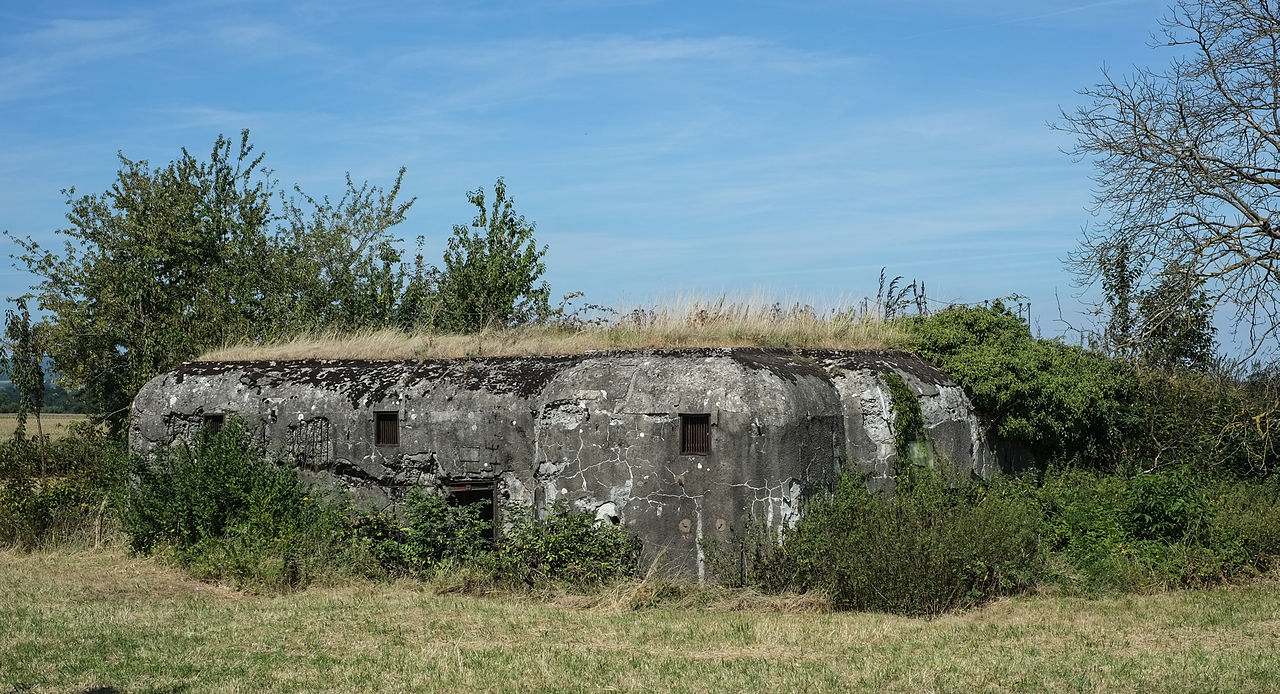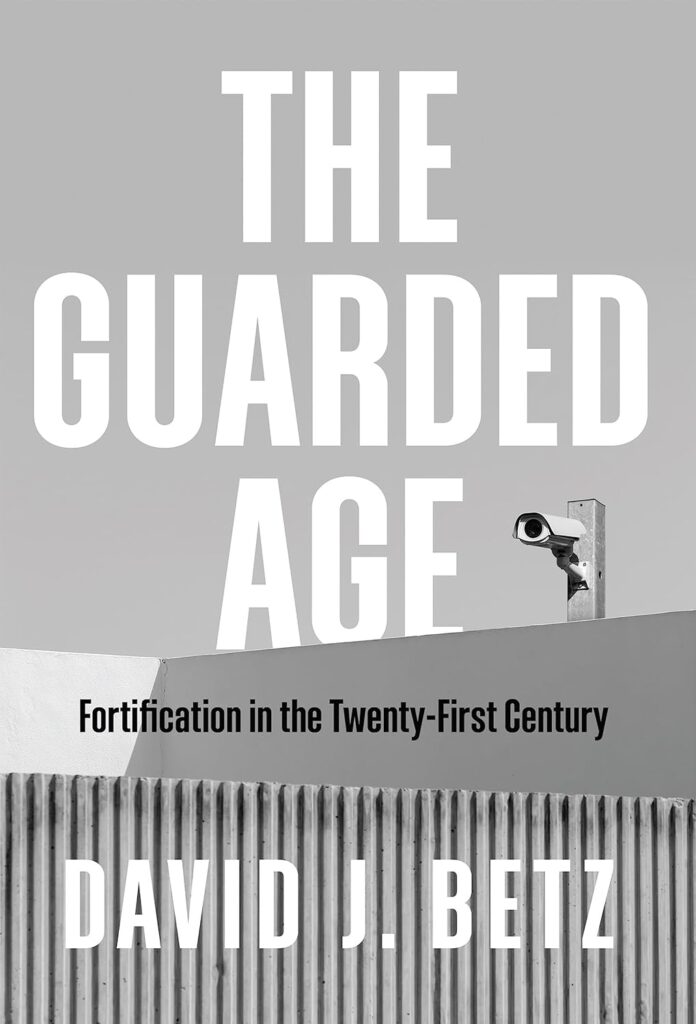The film Patton contains many quotable quotes, some of which cannot be repeated on a family friendly website such as Front Porch (for example, what it might have been like to spend the great World War Two in Louisiana). Among the less spicy quotes are “We’re gonna attack all night, we’re gonna attack tomorrow morning. If we are not victorious, let no man come back alive!”; “I love it. God help me I do love it so. I love it more than my life”; and my personal favorite (slightly spicy) “Rommel, you magnificent bastard! I read your book!”
Relevant to the ensuing discussion is this little number: “Fixed fortifications are a monument to the stupidity of man.” Patton, both the fictional and the real, was a general who believed that battles, and thus wars, are won by speed. It is a misapprehension by many that wars are won by killing the enemy. Wars are won by taking territory. And territory is taken by an army on the move. Patton, you might say, took seriously the admonition attributed to Nathan Bedford Forrest: a battle is won by he who gets there first with the most.
This fictional Patton’s martial wisdom regarding fixed fortifications makes sense given the advent of modern fighting technology. The rise of trains and eventually tanks, airplanes, armored troop carriers and the like make maneuverability both possible and desirable. Battles today are seldom two large armies running into each other on the open field or one army assaulting the walls of a well-fortified keep, as do the orcs in Tolkien’s battles at Helm’s Deep and Minas Tirith. Former Defense Secretary Donald Rumsfeld famously held that the modern American military should favor speed and agility over sheer firepower, a better fit for the hit and run style of modern warfare. Fortifications are at least monuments to an archaic form of fighting, if not human stupidity.
Or are they? David J. Betz, in his wonderful new book, The Guarded Age: Fortifications in the Twenty-First Century, would have us believe that the age of fortifications was never over; we are still living in it. Betz is Professor of War in the Modern World at King’s College, London. He brings to the table an impressive knowledge of history, geography, and, naturally, military strategy to argue that modern warfare and modern civilian life may have changed what kinds of fortifications we adopt, but it has not eliminated them from our daily routine. In fact, if anything, we live in a more fortified time than ever, if we take a slightly more capacious definition of the term “fortification.” Betz argues, “The one big message of this book is that even now in the supposed information age, physical stuff still matters—a lot.”
The modern conceit is that we “tear down walls,” walls between people, nations, economies, etc. Think of how free trade advocates speak of dismantling trade “barriers.” But, as Betz ably details, modern life comes at a price that has caused us to re-fortify, if only in slightly more camouflaged ways.
Betz gives a kind of history of walls. It will not surprise that the city wall is an ancient concept. Betz details how shifts in economics, military technology, and cultural priorities changed both the shape and the materials of city fortifications. For example, the rise of effective artillery necessitated a different kind of wall, one that could both withstand being pummeled by heavy flying objects (that eventually had the added quality of exploding) as well as allowing the quick deployment of the city’s or fort’s own defensive artillery. This is one reason modern transportation is so important to shifts in warfare and, thus, fortifications. Advances such as trains and eventually motorized trucks allow the easy deployment of very heavy equipment that can throw missiles impressive distances.
That is a military advance that causes a change in city architecture. As noted, economic and cultural changes also influence defensive architectural decisions. The thing about walls, Betz notes, is they not only keep people out—they also keep people in. City layout, including any exterior walls, alters the flow of people and goods. Eventually as trade becomes a high priority and people come to expect relatively free entry and exit from cities, the stereotypical walled city becomes a thing of the past. This is the rise of the modern open city.
This, however, did not mean the end of fortifications. Betz explains, for example, how the advent of air power meant that architects and engineers were required to reconsider how buildings are made. Such buildings must withstand a bombardment from the side but also from above. Further, in the modern world of terrorism, city planners and building designers need to think about threats such as car bombs, as seen in the tragic attack in Oklahoma City in 1995. If you ever wondered how much force is needed to destroy a building or kill a human, Betz has your answers. So, he takes us through adjustments modern buildings have made to minimize casualties in the advent of such an attack. In addition, he demonstrates the way traffic patterns and road planning are used by civil defense experts to try to minimize access to sensitive areas in densely packed urban environments. Betz painstakingly but intriguingly takes the reader through details of the “Ring of Steel” that protects London’s financial district.
While there are still the more traditional fortified installations (Betz notes the numerous military bases around the globe, all of which are essentially walled cities), the most engrossing parts of the book are where Betz demonstrates the way defense from attack is embedded into our daily lives. He extensively discusses airports, which are layers and layers of fortifications, some obvious and some more hidden. At airports and elsewhere we are familiar with security screening stations and the large concrete or metal pylons that protect buildings from being rammed by car bombers and the like. We probably think less of the near ubiquity of cameras in many situations. If you are in a major urban area in the Western world, chances are you are on camera for a goodly part of the time. Even my little rural university has cameras most everywhere. I used to think it an exaggeration when reading Mick Herron’s Slough House spy novels (and watching the Slow Horses show based on them) at how London law enforcement takes it for granted that there is CCTV of nearly every incident. After reading The Guarded Age, I no longer think it an exaggeration.
Some of our twenty-first century fortifications are virtual. Think of the computer or smartphone on which you are likely reading this essay. Mostly likely your device is protected by something called a “firewall.” I think we all get the imagery there. Our banks, hospitals, employers, are all using virtual fortifications to protect us from various kinds of attacks. The same is true of our energy infrastructure. Such facilities are protected by traditional walls (thinks of the fences around the power substation), but also fight virtual battles against cyber-attacks. Cyber-security is a burgeoning field, a kind of military engineering for the postmodern age.
If you are reading Front Porch Republic, I would guess a book on fortifications is not at the top of your reading list, thus making The Guarded Age a tough sell. Let me suggest that even if you are not into military strategy books, this book might just be for you. First, Betz is an extraordinarily clear and lively writer. Let’s be honest: academic prose can be a bit dull. Betz’s book is organized and presented well, and his use of copious examples and anecdotes makes the book intensely readable. What’s more, there are pictures! How many academic books can say that? I can put it no more plainly than this: I found The Guarded Age to be a fun read.
As suggested above, the book’s content naturally touches on various fields of interest, from history, strategy, and economics, to geography, engineering, and city planning. Betz effectively demonstrates that the notion of security is highly complex, involving any number of considerations that do not seem immediately obvious. Betz convinces the reader that many parts of modern living that we take for granted (many of which I have mentioned above) actually have security implications, and, therefore, we’ve taken steps to make those areas of life more secure.
Porchers have a deep concern with space. I suspect that many people who read this website have been influenced by such works as Jane Jacobs’s Death and Life of Great American Cities or James Howard Kunstler’s The Geography of Nowhere. Betz does a yeoman’s job of showing how our spaces, public and private, are influenced by many competing goods, one of which is the desire for safety.
Betz’s work helps us think about the conditions in which we live and the various tradeoffs we therefore make. The hyper-globalized world does tend to congratulate itself on its wall-breaking tendencies—I’ve already mentioned the breaking down of trade barriers—but think also about the way in which this week’s insistently transgressive behavior from some celebrity is described in the same way, such as Bruce/Caitlyn Jenner “breaking down walls” for the transgendered. We like to think of ourselves as free and unburdened, unlike our stogey old benighted ancestors, cringing in dread in their gated cities for fear of the Huns. But are we really that different?
I do not wish to play the easy game of “things are not as they appear” and “if only we could recapture our glorious past.” We really are freer in many important ways. I am glad that I can easily travel around the country and world. It is helpful that I can order nearly any book and it magically appears at my doorstep a few days later. If I want coffee from Africa, bananas from Honduras, films from India, I can get it all with relative ease. And on the whole, we can walk about freely without daily fear that the next village is going to show up any day now to beat our heads in with clubs. I’ll give that two enthusiastic thumbs up.
Betz encourages us not to be so insouciant, however. Everything comes with a cost. We are more supervised in our daily lives than ever. Our actions are regularly surveilled, recorded, documented, and saved for later. Betz’s description of license plate and face recognition in London is chilling. He notes that in many urban areas your movements are constantly recorded with AI learning recording who you are and your usual movements, while waiting for you to do something out of character to tag you as a potential threat. This is the kind of supervisory power your average medieval potentate could only dream of. There are corporations, creepily named after Tolkien-inspired references such as “Mordor” and “Palantir,” that make a living collecting and selling such security services. We tend to be blasé about such matters due to our belief that it is only the Chinese who need to worry about such things. Our governments and corporations would never misuse such power. After all, they are so nice. Or should I say N.I.C.E.?
And should we neglect the way the money buys more security? Betz notes the rise in gated communities amongst the world’s wealthy elites. This protects them against the crime and disorder that sometimes accompanies modern life, as well as just plain old “keep out the riffraff.” Some of these communities come with private security. Membership does indeed have its privileges.
I hope readers see that Betz’s book is engaging in its own right, perhaps more so than may originally meet the eye. Also, the book is deeply thought provoking about the nature of modern life. I can give a hearty endorsement to David Betz’s The Guarded Age.








3 comments
John Klar
I savored this essay — thanks. The phrase “architects and engineers were required to reconsider how buildings are made” reminds me of the controlled demolitions on 911 of buildings designed to withstand airplanes.
But in today’s world, I am hardly comforted by a technological Panopticon gauging my actions, and new vulnerabilities of open trade and borders are created by globalization (which Wendell Berry has called “the greatest weapon of mass destruction ever created”). In today’s world, people should be considering the corollary to the underground bunker of the 1950s. When this economy collapses (inevitably: neither the debt nor consumption is sustainable), the best place to be is not out in a horde of panicked barbarian urbanites suddenly aware of their peril (e.g. COVID-19), but hunkered down in a remote location with food, water, and weapons. A mini-fortress, sometimes referred to as a homestead.
Brian
Sounds fascinating, thank you for sharing. Will take a look.
But let’s be honest, most 21st century fortifications aren’t designed to protect “us”, meaning the average American/Westerner. We’re the enemy being defended against. The systems built during the Cold War have been turned quite effectively and horrifyingly inward, against us.
The US government can’t mass produce bullets, ships, or airplanes, let alone build walls, but it sure can collect information on everything you or I do every minute of our lives.
Brian Miller
Nicely put, Brian.
Comments are closed.